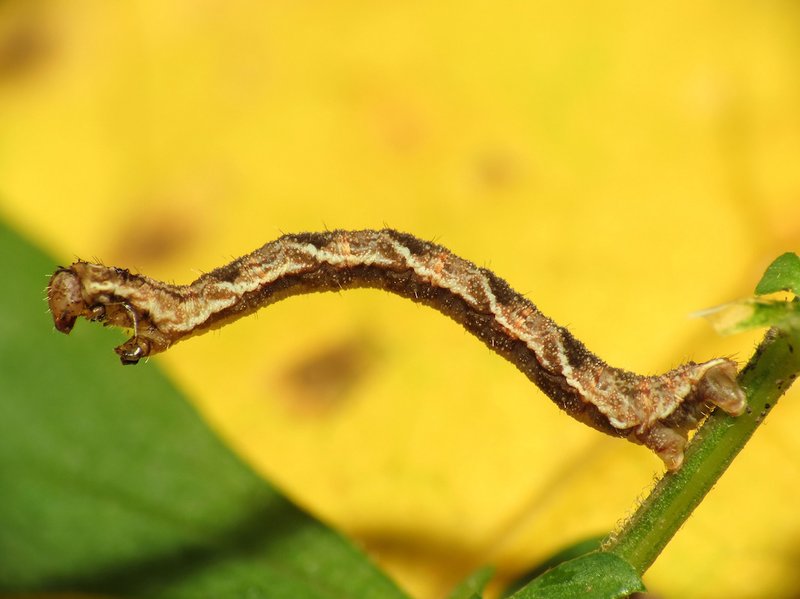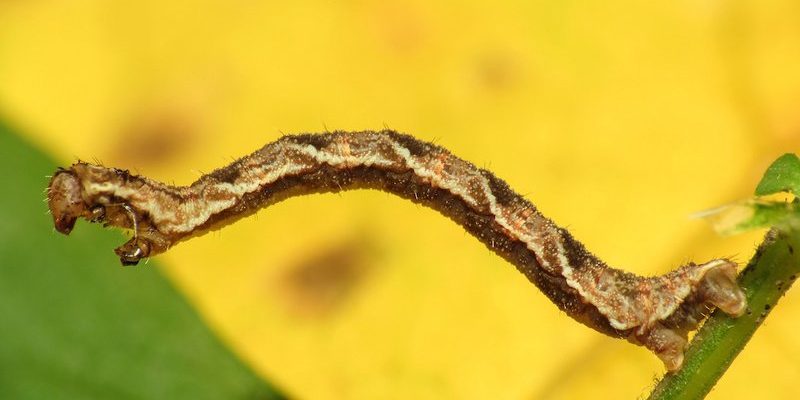
You might be wondering why temperature affects inchworms so much. Well, their biology plays a significant role. Unlike us, inchworms are cold-blooded, which means their body temperature depends on the environment around them. This unique characteristic leads them to adapt their behavior as the temperature shifts. Let’s take a closer look at how these little caterpillars respond when the thermometer starts to climb or fall.
The Basics of Inchworms and Temperature Sensitivity
So, what exactly is an inchworm? Essentially, they’re the larvae of certain moths and are known for their distinctive looping movement. When it comes to temperature, inchworms are sensitive little beings. They thrive in specific conditions, and any significant changes can impact their activity levels and overall health.
When temperatures drop, inchworms tend to slow down. They enter a sort of “survival mode,” where they conserve energy and become less active. This is a natural response to cold weather. Just like how we might feel lethargic on a chilly day, inchworms take it easy to avoid using up precious energy they’d need to stay warm.
On the flip side, when the temperature rises, inchworms become more active. Warmer weather triggers them to search for food, move around, and even find mates. In their quest for survival, inchworms are keen on optimizing their movements based on temperature shifts.
Behavioral Changes in Cold Temperatures
When winter rolls in and temperatures drop, inchworms employ some clever tactics to cope. One of their primary strategies is to seek shelter. You might find them hiding under leaves or within the bark of trees. This behavior isn’t just a random choice; it’s a smart survival tactic. Staying hidden helps them avoid harsh conditions and predators alike.
Another interesting aspect is how inchworms can enter a state similar to hibernation. During this time, they significantly slow down their metabolism, which helps them conserve energy. Picture it like a deep winter nap—they’re not dead, just resting and waiting for warmer days. This ability to adapt is critical for their survival in colder climates, where freezing temperatures can be harmful.
Plus, when the temperature gradually starts to warm up, inchworms become more active again. This transition isn’t immediate; it takes a bit of time for their bodies to wake up from their sluggish state. You might say it’s like coming out of a long sleep, slowly shaking off the cold and getting ready to munch on some leaves.
How Warm Temperatures Influence Inchworms
As temperatures rise, inchworms go into overdrive. When they sense the warmth, it’s like flicking a switch that turns on their appetite. Warmer weather encourages them to explore more, search for food, and even mate. This shift in behavior is vital because, during the warmer months, food sources are plentiful.
You might notice that in spring and summer, inchworms are more visible as they crawl along branches and leaves. This increased activity is essential for their growth and development. As they munch on leaves, they’re not just filling their bellies; they’re also storing energy for the next phase of their life cycle.
Another fascinating change is that in warm temperatures, inchworms can undergo their molting process more efficiently. Molting is how they shed their skin to grow. Warmer conditions promote faster growth, so inchworms can transform into moths more rapidly when the weather is just right.
The Importance of Temperature Regulation in Inchworm Life Cycles
Understanding how inchworms react to temperature isn’t just fascinating; it’s also critical for their life cycle. Inchworms experience several stages, from egg to larva to pupa and finally to moth. Each of these stages is influenced by temperature.
For instance, the incubation period of inchworm eggs is highly dependent on the temperature around them. Warmer conditions can shorten the time it takes for eggs to hatch, giving way to a new generation sooner. So, if you’re in an area with fluctuating temperatures, that might affect when you see those tiny inchworms emerging in spring.
Also, during their pupal stage, inchworms are vulnerable. They’re typically buried in the ground or within a safe space in a plant, waiting for the right moment to emerge as adult moths. If the temperatures are too cold or too hot, this can disrupt their development. This vital link between temperature and the different life stages shows how interconnected everything is in nature.
Environmental Factors and Their Impact on Inchworm Behavior
Temperature changes don’t happen in isolation; they’re often accompanied by other environmental factors like humidity and rainfall. For inchworms, these elements matter too. Higher humidity can make it easier for them to move and feed, while heavy rain might force them to seek shelter.
When humidity levels increase, inchworms tend to be more active because their bodies can maintain moisture better. It’s like how we feel more energetic after a rainstorm when the air is fresh. However, too much rain can be detrimental, as it might flood their habitats or wash them away.
Interestingly, these little creatures also react to changes in their surroundings caused by temperature shifts. For example, if a region experiences a sudden warming trend, it can lead to early leaf budding in plants. This newfound food source can spark a population increase in inchworms, causing them to thrive and grow rapidly.
Adaptation Strategies for Inchworms
Inchworms aren’t just passive creatures; they actively adapt to their temperature challenges. One interesting adaptation is their ability to change their color slightly to match their environment. This helps them stay camouflaged from predators. Imagine inchworms blending in with green leaves; it’s a clever way to avoid becoming a snack!
Additionally, their slow, looping method of movement is another smart strategy. By inching along slowly, they minimize detection as they move from one spot to another. This is especially useful in warmer weather when predators are on the lookout.
Furthermore, inchworms can also lay their eggs in different locations based on temperature trends, ensuring that their young hatch in the most suitable environment. It’s like they have an innate GPS guiding them to the best spots for survival, enhancing their chances of thriving in changing conditions.
Inchworms teach us a valuable lesson about resilience in the face of changing temperatures. Their ability to adapt their behaviors—whether slowing down in cold weather or speeding up in warmth—shows just how finely tuned they are to their environment. By understanding these little creatures and their reactions to temperature changes, we gain insight into the delicate balance of ecosystems and the importance of environmental conditions.
Next time you spot an inchworm, take a moment to appreciate its journey. It’s not just inching along; it’s navigating a complex world, all while responding to the temperature around it. Nature has its way of reminding us that even the smallest creatures have a big role in our ecosystems. So, whether it’s a chilly day or a warm one, remember that those tiny inchworms are out there, adapting and thriving in their unique ways.

